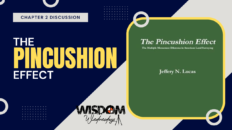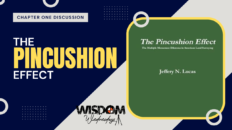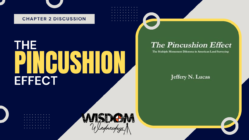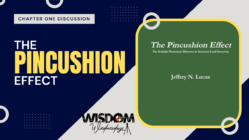Wisdom Wednesdays for the land surveying profession is a bi-weekly roundtable discussion to go over a chapter at a time from our “Surveying Bibles.” The goal is for everyone to read a chapter of a book and then have a roundtable discussion about that chapter. The current book being discussed is Writing Legal Descriptions by Gurdon H. Wattles.
| Meeting summary for Wisdom Wednesdays for the Land Surveying Profession – “Book Club” (05/01/2024) Quick recap The team discussed the importance of creating precise legal descriptions for land, using software tools and best practices to ensure accuracy. They explored the complexities of surveying, property boundaries, and the significance of proper documentation. Discussions also covered legal concepts like actual and constructive notice, as well as the challenges of retracing historical surveys and the financial resources required. Next steps • Trent will facilitate a group discussion to establish a consensus on the format and rules for describing tracks and other land features. • Jerry will share her approach to writing descriptions for parcels and subdivisions in Wisconsin, emphasizing the use of unique subdivision names. • Trent will discuss the challenges and considerations of using short form descriptions, particularly those involving exceptions. • Trent will continue working on the survey project for the easterly base of the town. • Harmony will consult with a licensed surveyor to verify the accuracy of the description based on the app data and pins. Summary Family Gathering and Vacation Plans Trent and Heather discussed a family gathering with seven attendees, with Heather planning to make Trent the host before she left at 4:20. There was a general discussion about travel and vacations, with Theresa sharing her plan to attend a Women’s Surveyor Summit in Pittsburgh in August, including attending several baseball games. The group also engaged in a light-hearted conversation about favorite baseball teams, with Theresa revealing her preference for the Minnesota Twins and the Padres. Improving Legal Description Writing Standards The team discussed their recent vacation experiences and then moved on to discuss the writing of legal descriptions. Trent led the conversation, emphasizing the importance of creating a national standard for this process. The team discussed the various components of a legal description, including the caption, body, and augmenting clauses. They also touched on the balance between using clear, concise language and avoiding superfluous words that could potentially change the meaning. The goal is to create descriptions that are both accurate and avoid ambiguity. Discussing Call Description Methods Trent sought the team’s input on the best methods for writing such descriptions, with Jerry and John offering their insights. The group also debated the pros and cons of using a list or narrative format for describing sequential calls along a boundary. The discussion also touched on the difference between using joined parties and boundary references in descriptions. Improving Deed Descriptions for Clearer Transactions Trent led a discussion on the importance of clear and sufficient property descriptions in deeds, highlighting the potential issues that can arise from ambiguous or incomplete information. The team shared their experiences and offered strategies for ensuring the sufficiency of deeds, including the use of multiple reviewers and engineers, as well as the avoidance of certain types of descriptions. The possibility of creating a checklist to facilitate the process was also suggested. Description Writing Software and Standards Jerry initiated a discussion about the use of description writing software and its potential benefits. John shared his positive experiences using Pro Kogo, a software that extracts course data and generates legal descriptions. Trent agreed to use this software for most descriptions, especially those with multiple calls, and highlighted the importance of cross-checking the data. The team also discussed the different ways to denote the beginning of a land description, with no clear consensus emerging. Jerry noted that in Wisconsin, the beginning must be at an original federal corner or a corner of a previous survey. Locatability and Legal Descriptions Discussion Jerry emphasized the importance of locatability in descriptions of deeds and contracts, explaining that it’s crucial to provide enough information to identify the location of the property on the ground. Trent illustrated this with an example of a deed that lacked the county information, making it impossible to locate the property. Harmony and Kyle clarified that in legal descriptions, the “beginning” refers to a known and identifiable point from which measurements or courses can be made. Jerry raised a concern about the sufficiency of descriptions in recording systems like Wisconsin and Virginia, where there’s a lack of checks for the accuracy and clarity of descriptions. Trent recommended that descriptions should identify a clear and verifiable point, which can be used to retrace the property’s boundaries. Addressing Land Description and Survey Challenges Trent, Jerry, and Kyle discussed the issues and challenges surrounding land descriptions and survey data. They highlighted the problems with relying on geographic coordinates and bearings, especially when the accuracy of the data is uncertain. The team also debated the necessity and interpretation of ‘basis of bearings’ in written descriptions, with Kyle noting its increasing requirement in legal descriptions. Jerry pointed out that descriptions must reference established landmarks, and Trent shared an example of a problematic description from Wisconsin. The team agreed that there is a need for more education and understanding among professionals to address these issues effectively. Land Boundary Surveying and Description Challenges Trent, Jerry, and other team members discussed the complexities of surveying and describing land boundaries. They talked about the importance of using both written descriptions and accompanying maps to accurately depict information. Jerry emphasized the significance of context, explaining that it determines the direction and location of survey lines. The team also discussed potential issues with inaccurate representations of section corners, which can cause problems for future surveys and ownership disputes. Understanding Legal Notices and Descriptions Jerry, Trent, Jeremiah, David, and Harmony discussed the complexities of legal descriptions, focusing on the concepts of actual, constructive, and implied notice. Trent explained the distinctions between these types of notices, emphasizing that constructive notice refers to information that is publicly available, while actual notice involves personal knowledge of a situation. Harmony shared her experience of bringing a survey to the city council, illustrating how her constructive notice was disregarded in favor of another company’s survey. The team agreed on the importance of understanding and navigating these concepts in their work. Property Surveying Challenges and Resources Harmony and Trent discussed the challenges and complexities of property surveying. Trent shared his experience working on a survey project in Utah, highlighting the difficulties of retracing and recreating government monuments and survey procedures. He emphasized the importance of interpreting evidence and staying open to new information, even if it challenges previous assumptions. Harmony acknowledged the need for financial resources to support these types of projects. They also touched on the concept of public and quasi-public records, and the necessity of thorough research to access and interpret all relevant information. Legal Descriptions, Parcel Separation, and Surveys Trent led a discussion on the complexities of legal descriptions, emphasizing the importance of correctly referencing boundaries and the problems caused by incorrect parcel separation. Trent and David also highlighted the practice of providing standalone legal descriptions for each parcel and the need for clear understanding of their limits. Lastly, Harmony expressed concerns about a survey conducted on her property and decided to take legal action to contest its results while also considering hiring another surveyor. The group stressed the importance of protecting one’s property and maintaining good neighbor relations. AI-generated content may be inaccurate or misleading. Always check for accuracy. |









